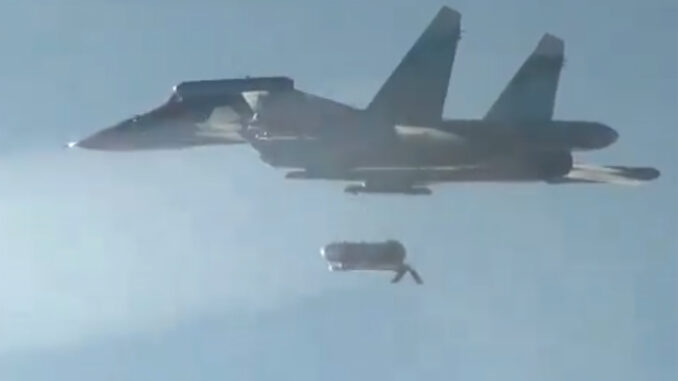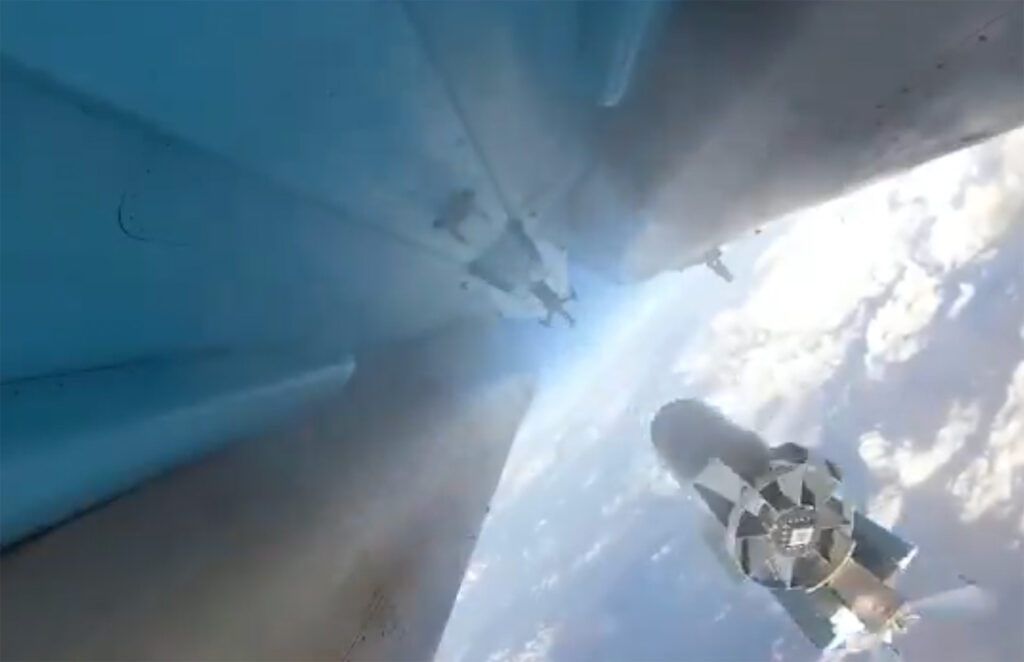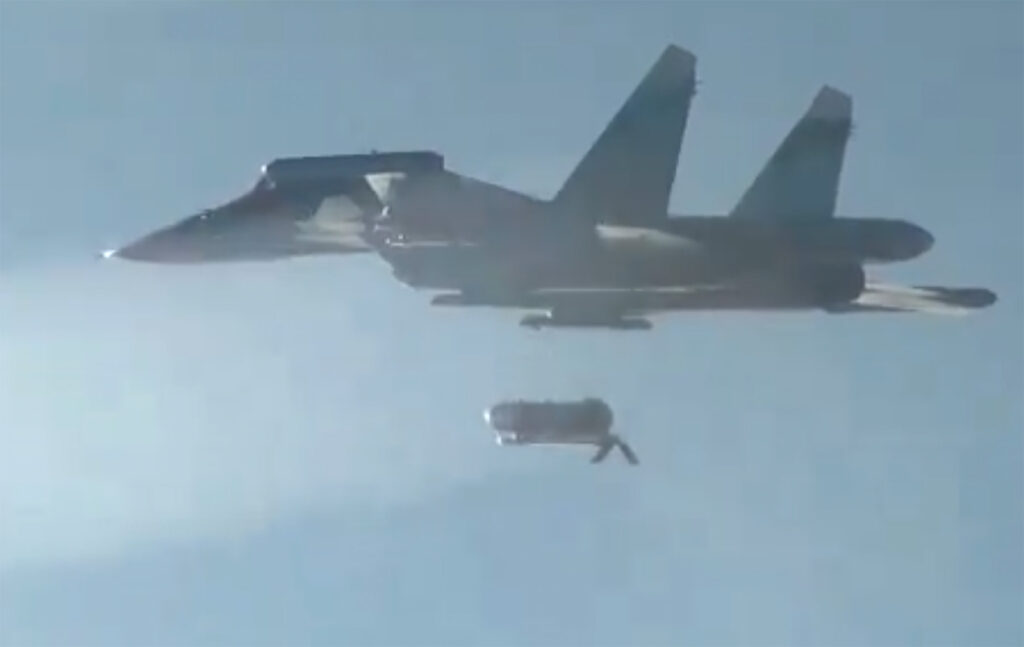
Analysis of Russia’s deployment of the FAB-3000 guided bomb, its destructive capabilities and strategic implications for the war in Ukraine.
Russia has published images showing the use of the FAB-3000 bomb, equipped with a UMPK guidance kit, from an Su-34 aircraft. This bomb, weighing over 3,000 kg, is designed for long-range precision strikes. This article explores the technical capabilities of this weapon, its operational context and its implications for Ukrainian defence and Russian military strategy.
The conflict in Ukraine has seen the emergence of new weapons and tactics, including Russia’s recent use of the FAB-3000 bomb. This weapon, equipped with a UMPK guidance kit, represents a significant advance in the Russian air arsenal. This article examines the technical aspects of this bomb, the strategic implications of its use and the consequences for Ukrainian defence.

Technical characteristics of the FAB-3000
Weight and dimensions
The FAB-3000 is a 3,000 kg bomb, approximately 4.2 metres long and 0.55 metres in diameter. Its weight and imposing dimensions make it one of the largest non-nuclear bombs used by Russia. Compared with smaller bombs such as the FAB-1500, the FAB-3000 has a much greater destructive capacity.
UMPK guidance kit
The UMPK (Unifitsirovannyi Modul Planirovaniya i Korrektsii) guidance kit adds retractable wings and a guidance module to traditional bombs, transforming the FAB-3000 into a guided weapon capable of precise long-range strikes. This kit allows the bomb to glide towards its target after being dropped, increasing its range and accuracy. The range of the FAB-3000 equipped with the UMPK is estimated at several tens of kilometres, well beyond that of traditional free-fall bombs.
Performance examples
Tests and published videos show that the FAB-3000 can be dropped at high altitude, enabling carrier aircraft to remain out of range of enemy air defences. This capability is crucial for operations in heavily defended areas such as Ukraine.
Operational and strategic context
Use in Ukraine
The publication of images by the Russian Ministry of Defence shows the use of the FAB-3000 against Ukrainian positions in the Kharkiv and Sumy regions. These strikes were aimed at temporary deployment points for the Ukrainian armed forces, demonstrating Russia’s intention to use highly destructive weapons to weaken Ukrainian defences.
Implications for Ukrainian defence
The introduction of the FAB-3000 poses new challenges for Ukrainian air defence. The ability of this bomb to be dropped from a safe distance complicates the task of Ukrainian defence systems, which now have to deal with long-range, high-powered weapons. This is forcing Ukraine to review its defence strategies and strengthen its detection and interception capabilities.
Strategic consequences
Impact on Russian tactics
The use of the FAB-3000 enables Russia to strike strategic targets with great precision while minimising the risks to its aircraft. This approach strengthens Russia’s ability to carry out deep strike operations without exposing itself to enemy air defences. In addition, the FAB-3000’s ability to inflict massive damage makes it a weapon of choice for attacks on critical infrastructure and troop concentrations.
International reactions
The use of bombs on this scale also has repercussions on the international stage. Images and reports of such strikes can influence international perceptions of the conflict, leading to condemnation and potentially further sanctions against Russia. In addition, the use of such weapons could prompt other nations to strengthen their own deterrent arsenals, contributing to an escalation of global military tensions.

Technical and logistical challenges
Aircraft transport capacity
The FAB-3000 is traditionally associated with heavy bombers such as the Tu-22M3. However, adapting this bomb to be carried by tactical aircraft such as the Su-34 represents a major technical advance. This adaptation allows greater operational flexibility, although the additional payload imposes constraints on the range and manoeuvrability of the carrier aircraft.
Production and logistics
Production of the FAB-3000 and its UMPK kits has been stepped up, with a significant increase in production output. However, the logistics associated with handling and deploying these bombs remain complex, requiring specialised infrastructures and close coordination between the various branches of the Russian armed forces.
The introduction of the FAB-3000 bomb equipped with the UMPK guidance kit in the Ukraine conflict marks an important step in the evolution of Russian air tactics. This weapon combines massive destructive capability with increased precision, posing new challenges to Ukrainian defences and influencing the strategic dynamics of the conflict. The implications of its use go beyond the battlefield, affecting international relations and the global perception of the war in Ukraine. The continued evolution of these technologies and their deployment on the ground will be key elements to monitor in the months ahead.
War Wings Daily is an independant magazine.